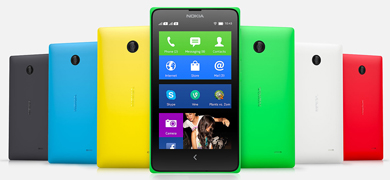News
Microsoft Adds Windows Phone OEMs, Describes Windows Phone 8.1
- By Gladys Rama
- February 24, 2014
Microsoft on Sunday announced it was more than tripling the number of Windows Phone hardware partners, as well as described a few changes coming to its smartphone platform.
The announcements were made by Joe Belfiore, vice president of operating systems at Microsoft, during a press talk at this week's Mobile World Congress (MWC) event in Barcelona.
Microsoft is expanding the number of Windows Phone original equipment manufacturers (OEMs) from the current four -- Nokia, Samsung, HTC and Huawei -- to 13, Belfiore said. The nine new OEMs are Foxconn, Gionee, JSR, Karbonn Mobiles, Lava (Xolo), Lenovo, LG, Longcheer and ZTE. However, as ZDNet's Mary Jo Foley noted, both ZTE and LG have manufactured Windows Phone 7-era devices in the past, so it is unclear why Microsoft included them in this list of "new" partners.
"Maybe this is more of a list of new, plus 'they're back!' partners," Foley speculated.
Together, Windows Phone OEMs now comprise over half of all smartphones sold worldwide, according to Belfiore in a blog post. This greater variety of smartphone partners will enable Microsoft to bring to market a wider range of devices at different sizes and price points, he said.
He added that many of the new partners are based in emerging markets (for example, New Delhi-based Gionee and Shanghai-based Longcheer). "They bring competitive products to market because of their knowledge of the local markets, channels and consumers," Belfiore said. "They are important partners that will help broaden availability of Windows Phones to new and emerging markets."
'A Compelling New Update'
Belfiore also announced a few new features and expanded hardware support coming to Windows Phone. Presumably, these changes will come with the forthcoming Windows Phone 8.1 update that Microsoft is expected to release in April, though Belfiore did not mention the update by name. He did note that these new features will arrive in the spring as part of "a compelling new update."
According to Belfiore, Microsoft is bringing some key enterprise-focused features to Windows Phone, such as support for VPN, enterprise Wi-Fi, S/MIME and mobile device management.
He also said that Windows Phone will support Qualcomm Snapdragon 200 and 400 series chipsets, as well as the use of soft keys and dual SIM. "One nice benefit of these additions is that many hardware vendors will be able to use the same hardware for both Android and Windows Phone devices," Belfiore said.
For its OEMs, Microsoft is also launching the Windows Hardware Partner Portal. The company is also working with Qualcomm to enable its Windows Phone OEMs to manufacture devices through the Qualcomm Reference Design program.
The Nokia X
Ovum analyst Nick Dillon says Microsoft's announcements reiterate its commitment to the Windows Phone platform by broadening its focus beyond Nokia, which currently accounts for about 90 percent of all Windows Phone devices sold worldwide and whose device business Microsoft is set to acquire by the end of this quarter.
"The addition of nine new hardware partners is certainly a positive step, but the significance of a Qualcomm Reference Design (QRD) for Windows Phone should not be understated," Dillon said in a research note. "In theory, the QRD will enable even companies with little knowledge of handset design and manufacturing to launch Windows Phone devices. Coupled with the relaxed hardware requirements, this move could help to push Windows Phone beyond its current, very Nokia-centric, existence."
Frank Shaw, Microsoft's corporate vice president of communications, emphasized the company's commitment to Windows Phone in a blog post Monday that was largely a response to Nokia's unveiling of three low-priced Android smartphones at MWC.
 Nokia's Android-based Nokia X family of smartphones
Nokia's Android-based Nokia X family of smartphones
As expected, the Nokia X, Nokia X+ and Nokia XL run a "forked" version of Android. The devices will run some Windows applications out of the box, including OneDrive, Skype and Outlook.com. They also feature a user interface similar to Windows Phone's tile interface, and resemble Nokia's Windows Phone-based Lumia devices in terms of hardware.
"There's been lots of speculation about what this announcement means for Microsoft and about our pending acquisition of Nokia's Devices and Services business," Shaw wrote, presumably in an acknowledgment of questions about whether Microsoft will use Nokia's forked Android devices to bolster its presence in the low-end smartphone market. Nokia's announcement seems to support this reasoning, describing the Nokia X family as designed to "provide an on-ramp to Lumia and Microsoft services" for users in emerging markets.
"We're pleased to see Microsoft services like Skype, OneDrive and Outlook.com being introduced on these devices. This provides the opportunity to bring millions of people, particularly in growth markets, into the Microsoft family," Shaw said.
However, he underscored Windows Phone as the centerpiece of Microsoft's smartphone vision: "Our primary smartphone strategy remains Windows Phone, and our core device platform for developers is the Windows platform."